#giuseppe ceracchi
Note
what would you say is the most accurate painting of Hamilton?
According to Elizabeth and Hamilton's grandson, Allan McLane, the most accurate in Hamilton's likeness was James Sharples's and John Trumbull's;
"Most of the portraits of Alexander Hamilton, of which there seem to be many, are inartistic and disagreeable, because of their crudity and ugliness, a large number being the work of the peripatetic painters who flourished during the early part of the century, and up to the discovery of Daguerre. Exceptions, however, are the portraits of Trumbull and Sharples. The work of the former is characterized by its dash and spirit, and an artistic excellence which is generally conceded. The merit of the work of the latter lies chiefly in the fidelity of the likeness. The Trumbull portraits of Hamilton are well known, that belonging to the New York Chamber of Commerce having been often copied and engraved. The Sharples portrait, which is here presented, has never been reproduced.”
“James Sharples (or Sharpless), an Englishman, came to the United States in 1796, and won im- mediate popularity through the novelty and cleverness of his profile pastel portraits. That of Washington was followed by many others of persons identified with the Revolution. This picture of Hamilton is from one of his few portraits in oil, a small cabinet picture measuring eight by ten inches, which was owned by my grandmother, Mrs. Alexander Hamilton, who survived her husband fifty-two years, and died in the city of New York in 1856, at the age of ninety-seven years. She bequeathed it to my father, the late Philip Hamilton, who was their youngest son. She always maintained that the Sharples portrait was the only satisfactory likeness she had known. So far as I can learn, it was painted when Hamilton was about thirty-nine years old, and after he had retired from the treasury and had resumed the practice of law in New York.”
(source — The Century)
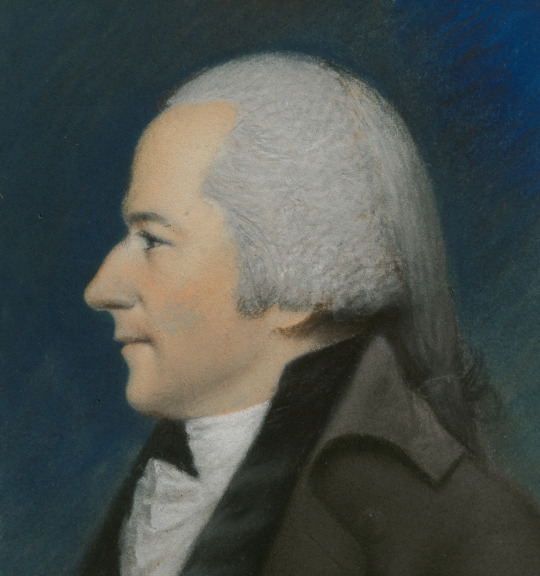
Alexander Hamilton by James Sharples, c. 1796

Alexander Hamilton by John Trumbull, c. 1806
There is actually a matching portrait by Sharples of Elizabeth too, although Trumbull's is arguably the most beloved and is usually the iconic one you will see whenever searching around Hamilton on the internet.
But of course, there is also the unforgettable marbel bust of Hamilton. By Ceracchi, who was a sculptor from Rome who had proposed to Congress a memorial to the American Revolution, however Congress would decide against his proposal. But that was after he would sculp several prominent figures like; Washington, Jefferson, and as we all know, Hamilton. In July 1792, Ceracchi wrote Hamilton that he was “impatient to receive the clay that I had the satisfaction of forming from your witty and significant physiognomy”. When Ceracchi heard the memorial proposal was rejected, he sent the completed busts to each of his models in 1794. But also hilariously sent them each a bill for the work they didn't ask for. And while Washington tried to return the bust rather than pay that outrageously for a marbel copy of his face, Hamilton shamelessly paid $620 “for this sum through delicacy paid upon cherachi’s draft for making my bust on his own importunity & as a favour to him.” because he wanted that bust for himself if he could.

The Hamilton family kept the bust until 1896 when they donated it to the New York Public Library, there is also a copy on display at the Grange. This bust would be utilized as a common reference for Hamilton's appearance posthumously; Trumbull used the bust as model for a series of 1804-1808 portraits of Hamilton (Example above). And the first US Postal Service stamp to honor Hamilton was an 1870 30-cent stamp using this bust as a model. Also in 1880 while the bust was owned by Hamilton's son, John Church Hamilton, he lended it so it could be used as a model for the head of the granite statue of Hamilton by Carl Conrads.
#amrev#american history#alexander hamilton#historical alexander hamilton#james sharples#john trumbull#giuseppe ceracchi#historical artwork#history#queries#sincerely anonymous#cicero's history lessons
28 notes
·
View notes
Photo

The real face of Alexander Hamilton at age 37, well almost the real face is shown in this Photoshop reconstruction of the Giuseppe Ceracchi 1794 bust of Hamilton. I would have loved for Hamilton to have had a life mask cast, but unfortunately, no such mask exists. So, I suppose this reconstruction is the next best thing. The Ceracchi bust is believed to be the most accurate depiction of Hamilton.The reconstruction features his reddish-brown hair without any powdering and his beautiful blue eyes.
356 notes
·
View notes
Text
love this giuseppe ceracchi bust specifically because he made hamilton sit for it and pay for it against his will, playing on his pathetic little ego
13 notes
·
View notes
Text

Anne Seymour Damer, née Conway, (1748 - 1828) was an English sculptor. Once described as a 'female genius' by Horace Walpole, she was trained in sculpture by Giuseppe Ceracchi and John Bacon. Influenced by the Enlightenment movement, Anne was an author, traveller, theatrical producer and actress, as well as an acclaimed sculptress.
A number of sources have named Damer as being involved in lesbian relationships, particularly relating to her close friendship with Mary Berry, to whom she had been introduced by Walpole in 1789, and with whom she lived together in her later years.
7 notes
·
View notes
Note
Hi! I was wondering what the best likeness of Hamilton was? Is it the one by Sharples in Allan’s bio & are there any other good likenesses?
The Sharples profile of Hamilton does seem to have been the best according to Hamilton’s family, but the marble bust by Giuseppe Ceracchiwas also a very good likeness. In fact, when John Trumbull was commissioned to paint a posthumous portrait of Hamilton, Eliza lent him the bust to use as a reference for Hamilton’s face. That 1806 John Trumbull portrait went on to be the basis for the $10 bill.
How Hamilton ended up with the bust is actually kind of a funny story–Ceracchi was a sculptor from Rome who had proposed to Congress a memorial to the American Revolution. Congress ultimately rejected his proposal, but not before he’d sculpted several prominent figures, including Washington, Jefferson, and, of course, Hamilton. Ceracchi sent the completed busts to each of his models once it was clear the memorial wouldn’t happen; more problematically, he also sent them each a bill. Where Washington determined to return the bust rather than pay, Hamilton recorded in his cash book $620 “for this sum through delicacy paid upon cherachi’s draft for making my bust on his own importunity & as a favour to him.”(See Ceracchi to Hamilton, 16 July 1792, fn.2)
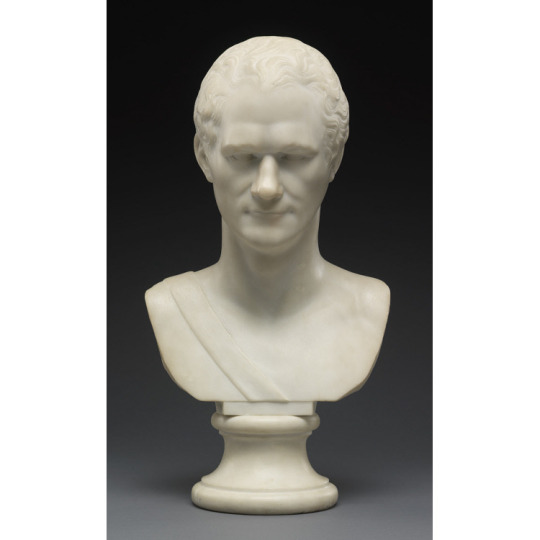
Image Source: Smithsonian National Portrait Gallery
35 notes
·
View notes
Text
I’ve always been pretty interested in how Alex and John would have looked when they were younger, so I used a dodgey photo editing app and the Giuseppe Ceracchi bust of Hamilton to make this. It lowkey looks a bit too young, and the eyes are a little unsettling, but I’m pretty impressed!
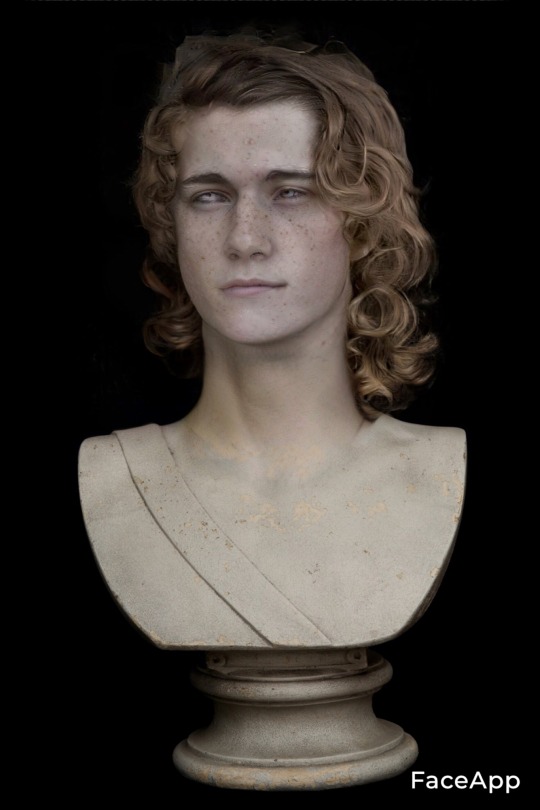
The bust in question:
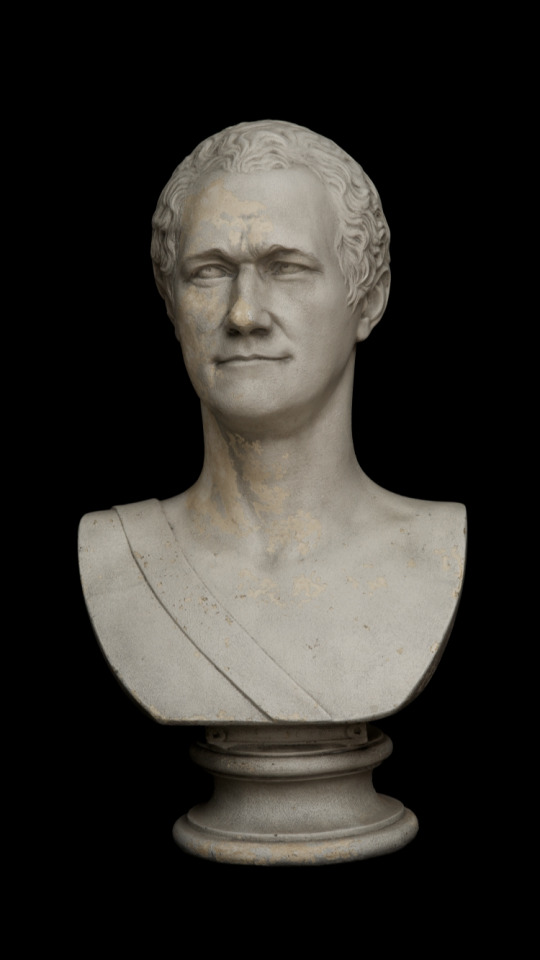
(I also tried to do Laurens, but that one didn’t go so well haha)
#Alexander Hamilton#was this really necessary?#probably not#and it’s probably been done plenty of times before#but it’s all g#Hamilton#history#I guess?
8 notes
·
View notes
Photo

Anne Seymour Damer, by Joshua Reynolds (1723–1792)
Anne Seymour Damer, née Conway, (8 November 1748 – 28 May 1828) was an English sculptor. Once described as a 'female genius' by Horace Walpole, she was trained in sculpture by Giuseppe Ceracchi and John Bacon. Influenced by the Enlightenment movement, Anne was an author, traveller, theatrical producer and actress, as well as an acclaimed sculptress.
She exhibited regularly at The Royal Academy from 1784 to 1818. She was a close friend to members of Georgian high society, including Horace Walpole and the Whig politician Charles James Fox. It is believed that Damer was a lesbian and was in a relationship with the actress Elizabeth Farren.
#Anne Seymour Damer#joshua reynolds#XVIII century#people#portrait#women in history#women in art#paintings#art#arte
64 notes
·
View notes
Photo

George Washington, Giuseppe Ceracchi, 1795, Metropolitan Museum of Art: European Sculpture and Decorative Arts
Bequest of John L. Cadwalader, 1914
Size: Overall (with base): 28 7/8 × 22 × 13 in. (73.3 × 55.9 × 33 cm); Height (without base): 24 1/2 in. (62.2 cm)
Medium: Marble
https://www.metmuseum.org/art/collection/search/192901
6 notes
·
View notes
Text
While I was in Arkansas I stopped by Crystal Bridges to see…
Alexander Hamilton (by John Trumbull)
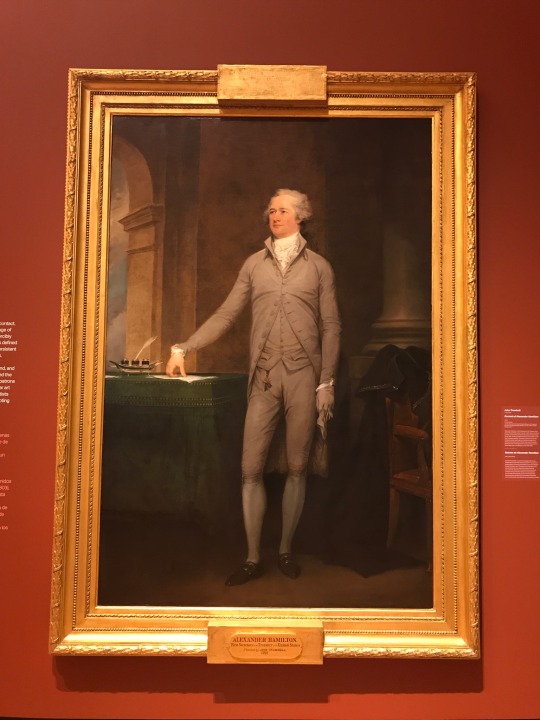
The bust of Alexander Hamilton by Giuseppe Ceracchi.
There is this famous quote from an anonymous author about Eliza in her home: “I remember nothing more distinctly than…a marble bust of Hamilton standing on its pedestal in a draped corner. That bust I can never forget, for the old lady always paused before it in her tour of the rooms, and leaning on her cane, gazed and gazed, as if she could never be satisfied.”
This is that bust.
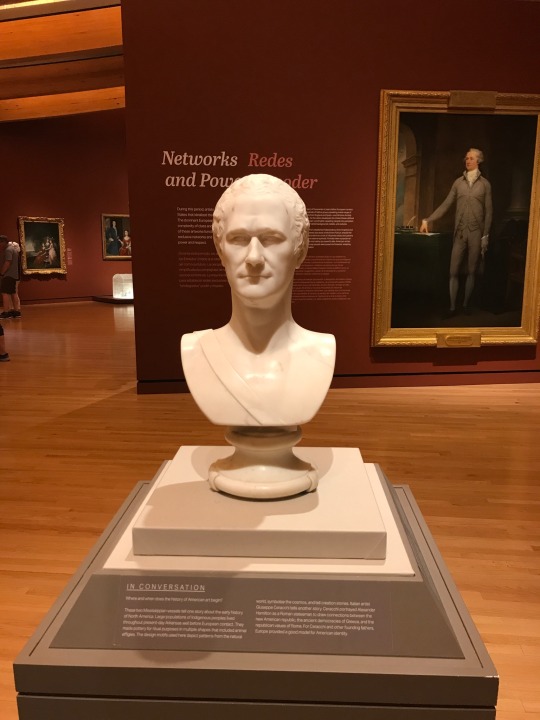
George Washington (by Charles Wilson Peale)

And the Marquis de Lafayette (by Samuel Morse, inventor of the telegraph). This is a reference painting. The full-length one is in New York City hall
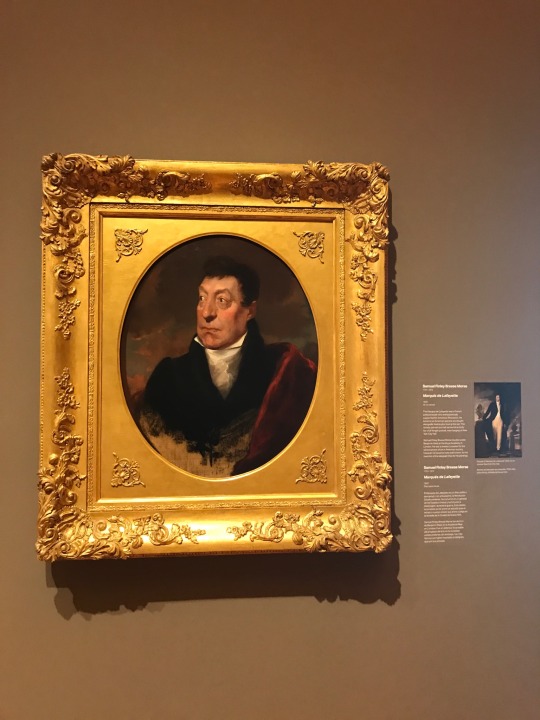
#Alexander hamilton#George Washington#Eliza hamilton#YALL IVE HEARD THIS QUOTE DOZENS OF TIMES#AND I SAW THE BUST THAT ELIZA GAZED AT#marquis de lafayette#Lafayette#hamilton#Samuel Morse#crystal bridges#Arkansas
2 notes
·
View notes
Photo

Alexander Hamilton, Giuseppe Ceracchi, 1794, Smithsonian: National Portrait Gallery
Size: With Socle: 57.2 × 30.5 × 26.7 cm (22 1/2 × 12 × 10 1/2")
Medium: Marble
https://npg.si.edu/object/npg_NPG.66.30
3 notes
·
View notes
Text
The fascination with busts of Hamilton
After @essentialaegis pointed this out in the notes of this post, I started to look back and realize there were quite a few times people had some alluring interest or comments towards busts of Hamilton. These particular recollections being from Elizabeth Hamilton, Thomas Jefferson, and none other than Aaron Burr.
I remember nothing more distinctly than a sofa and chairs with spindle tracting legs, upholstered in black broadcloth, embroidered in flowery wreaths by Mrs. [Elizabeth] Hamilton herself, and a marble bust of [Alexander] Hamilton standing on its pedestal in a draped corner. That bust I can never forget, for centuries the old lady always paused before it in her tour of the rooms, and, leaning on her cane, gazed and gazed, as if she could never be satisfied.
The Atlantic Monthly. United States, Atlantic Monthly Company, 1896.
After gazing a moment at these objects, the eye settled with a deeper interest on busts of [Thomas] Jefferson and [Alexander] Hamilton, by Ceracchi, placed on massive pedestals on each side of the main entrance—“opposed in death as in life,” as the surviving original sometimes remarked, with a pensive smile, as he observed the notice they attracted.
Randall, Henry Stephens. The Life of Thomas Jefferson. United States, Derby & Jackson, 1858.
Soon after his return Burr visited Boston. Phillips called on him at the Tremont Hotel, and offered to act the part of a cicerone. Among other places they went to the Athenæum, then on Pearl Street, to see the pictures and look at the library. As they walked down the hall, between the alcoves, Phillips caught sight of a bust of Hamilton, one of the ornaments of the library, which he had forgotten was there. He tried on some pretext to draw Burr in another direction; but he, too, had seen the bust and marched straight up to it. He stood facing it for a moment, then turned and said: “A remarkable man—a very remarkable man.” Upon this he wheeled on both heels in military style and moved on again with great composure.
Martyn, William Carlos. Wendell Phillips: the Agitator: With an Appendix Containing Three of the Orator's Masterpieces, Never Before Published in Book Form, Viz.: "The Lost Arts", "Daniel O'Connell", "The Scholar in a Republic".. United Kingdom, Funk & Wagnalls, 1890.
[Original source Recollections of Wendell Phillips, by F. B. Sanborn]
Take an anecdote in point. Mr. John Ant—n, a brother lawyer, had a bust of Hamilton in his office, and, from a trick or habit, A., when in earnest thought or talk, would fix his eye upon the bust. Burr had a consultation with him; and A., unconsciously, fixed his eye upon the pale Hamilton; but, instantly remembering, withdrew his sight from it, still not before Burr divined his thoughts. The Colonel quietly, slowly poked out his long fingers, pointed to the bust very deliberately, and said: “He may thank me—I made him a great man.”
PARTON, James. The Life and Times of Aaron Burr ... Vice-President of the United States, Etc. Fourteenth Edition. United States, n.p, 1864.
He had occasion to pay some attentions to Aaron Burr during a visit Burr made to Boston after the death of Hamilton. He took him to the Athenæum, and while walking through the sculpture gallery, seeing the bust of Hamilton near him, turned off, naturally thinking it would be disagreeable to Burr to be brought before it. But Burr went directly up to it and said in a very loud tone, ‘Ah! Here is Hamilton.’ And, pressing his finger along certain lines of his face said, ‘There was the poetry!’
Adams, Charles Francis. Richard Henry Dana: A Biography. United States, Houghton, Mifflin, 1891.
Arguably the most beloved busts of Hamilton has been coined as Giuseppe Ceracchi's iconic one. When Ceracchi took a trip to the US in 1791-92, he proposed a monument in honor of the Revolution and appealed to Congress to finance the project. Ceracchi had attempted to raise the funds for the memorial, and Jefferson endorsed him and told Robert Livingston that he was; “a very celebrated sculptor from Rome.” [x] He began sculpting models of the founding fathers, including others like Washington and Jefferson. In July 1792, Ceracchi wrote to Hamilton that he was; “impatient to receive the clay that I had the satisfaction of forming from your witty and significant physiognomy”. [x] When Ceracchi heard the memorial proposal was rejected by Congress on May 7th, 1792, he sent the completed busts to each of his models in 1794. Hilariously, he also sent them each a bill for the work which they didn't ask for. Though while Washington tried to return the bust rather than pay that outrageously for a marbel copy of his face, Hamilton shamelessly paid $620; “for this sum through delicacy paid upon cherachi's draft for making my bust on his own importunity & as a favour to him.” [x]
The Roman stylized bust paints Hamilton like an ancient senator, with a slash of the Order of Cincinnatus over his bare chest—Likely referring to the Society of the Cincinnati, which you can read more about here and here. The original is inscribed on the back in Latin; “DE FACIE PHILADELPHIAE EX ECTIPO FLORENCIAE FACIEBAT JOS. CERACCHI CIDDCCLXXXXIV” Which translates; “Executed in Philadelphia and copied in Florence, Executed by Joseph Ceracchi, 1794.” [x]
The Hamilton family kept the bust until 1896 when they donated it to the New York Public Library, there is also a copy on display at the Grange. This bust would be utilized as a common reference for Hamilton's appearance posthumously, as Trumbull used the bust as model for a series of 1804-1808 portraits of Hamilton, that would later be used for reference on the ten dollar bill. [x] And the first US Postal Service stamp to honor Hamilton was an 1870 30-cent stamp using this bust as a model. [x] Also in 1880 while the bust was owned by Hamilton's son, John Church Hamilton, he lended it so it could be used as a model for the head of the granite statue of Hamilton by Carl Conrads. [x]

#amrev#american history#alexander hamilton#historical alexander hamilton#elizabeth hamilton#elizabeth schuyler#thomas jefferson#aaron burr#history#cicero's history lessons#founding fathers
96 notes
·
View notes
Photo
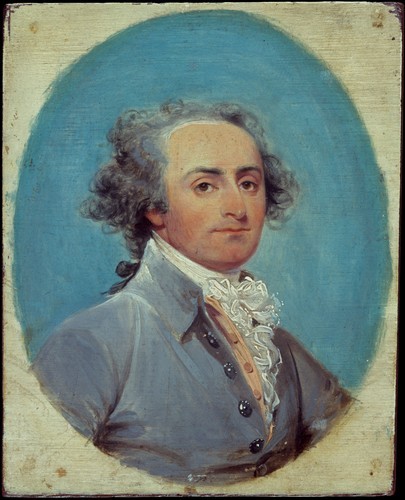
Giuseppe Ceracchi, John Trumbull, ca. 1792, American Paintings and Sculpture
Morris K. Jesup Fund, 1936
Size: 3 7/8 x 3 3/16 in. (9.8 x 8.1 cm)
Medium: Oil on wood
https://www.metmuseum.org/art/collection/search/12824
1 note
·
View note
Note
what did alexander hamilton look like? i’ve only seen very vague descriptions of his appearance and i was wondering if you’d know?
It’s hard to know exactly what he looked like as photography didn’t exist during his lifetime. In general he seems to have been described as having reddish-brown/auburn hair, blue (sometimes described as almost violet) eyes, and fair skin. He was approximately 5′7″ tall.
He was frequently described as handsome and sometimes described as feminine. William Sullivan, in his description of Hamilton, refers to the “almost feminine rosiness of his cheeks”, “attractive smile” and his “uncommonly handsome face.”
Fisher Ames described his eyes as follows “These were of a deep azure, eminently beautiful, without the slightest trace of hardness or severity, and beamed with higher expressions of intelligence and discernment than any others that I ever saw”.
The best source we have for Hamilton’s appearance is probably the portraits of him. However some of the portraits look like completely different people, so let’s be a little more discerning to which we look to.
Perhaps the most famous likeness of Hamilton was painted posthumously by John Trumbull. In 1804 he was commissioned to complete this portrait. Trumbull painted several similar versions of this portrait, the painting below was painted in 1806. This likeness has served as a reference for several other artists and is the basis of the portrait on the American $10 bill.
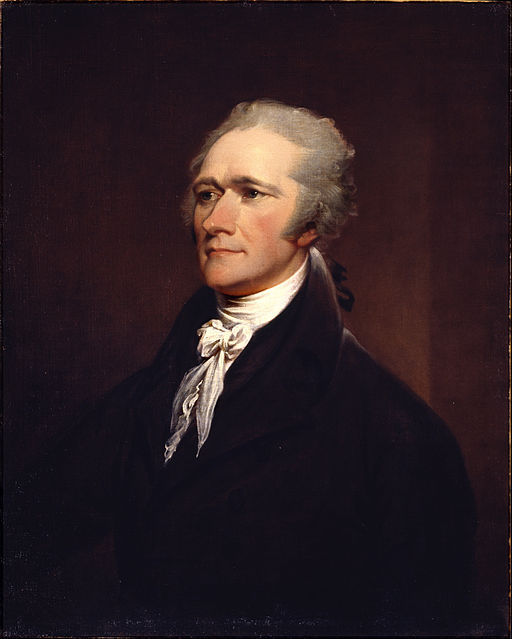
[Alexander Hamilton, c. 1806, oil on canvas by John Trumbull, via the National Portrait Gallery]
This likeness was actually based on the marble bust below sculpted by Giuseppe Ceracchi in 1794. Ceracchi made a terracotta model of Hamilton from life that was used as the basis for the marble bust. Ceracchi initially gave Hamilton the impression that the bust was a gift, but later charged him $620. Hamilton notes this in his Cash Book writing: “for this sum through delicacy paid upon cherachi’s draft for making my bust on his own importunity & as a favour to him”. Hamilton is depicted in this sculpture in the style of a Roman senator, as such the hair and outfit (such as it is) should not be considered accurate.

[Alexander Hamilton c. 1794, marble by Giuseppe Ceracchi, via Crystal Bridges Museum of Art (link)(link)]
John Trumbull had also painted a likeness of Hamilton from life. In 1792 John Trumbull painted the portrait below that Hamilton had sat for. Hamilton has a bit more weight to him in this portrait than what is seen in others, as around this time he had put on a bit of weight. Angelica wrote to Eliza on the 25th of April 1792, “Colonel Beckwith tells me that our dear Hamilton writes too much and takes no exercise and grows too fat” she instructs Eliza to “take care of his heath and good looks.”
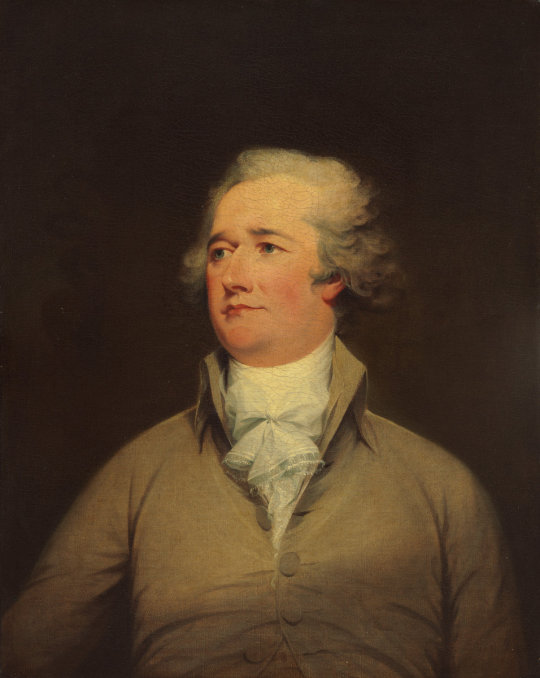
[Alexander Hamilton, c. 1792, oil on canvas by John Trumbull, via the National Gallery of Art]
In 1802 Ezra Ames painted the portrait of Hamilton below. It is said that Elizabeth Hamilton considered this portrait an excellent likeness.

[Alexander Hamilton, c. 1802, oil portrait by Ezra Ames, via Wikimedia Commons]
This is a cropped version of the painting. Unfortunately I couldn’t find a high-res full colour un-cropped version of this portrait. You can see a low-res, un-cropped, colour copy here and a un-cropped, black and white version in this article.
This is far from a complete list of every portrait painted of Hamilton or every description given, but hopefully it gave you a bit of an idea.
73 notes
·
View notes
Text

Thomas Jefferson
1788
John Trumbull American
The Connecticut-born, English-trained Trumbull became the leading chronicler of the United States’ newly won independence in the years after the American Revolution. Beginning in 1789, he spent five years traveling up and down the Eastern Seaboard taking "heads" from life, mainly of statesmen and military officers—such as Thomas Jefferson and Thomas Mifflin, displayed here—in addition to Giuseppe Ceracchi, a noted Italian sculptor visiting Philadelphia in search of public commissions. As preparatory studies for Trumbull’s many history paintings, these gem-like miniatures are distinguished by their sensitive characterization and fluid handling.
The Metropolitan
2 notes
·
View notes
Text
Places and Things Made/Named For/After George Washington
This is the Washington D.C. edition part 1/3
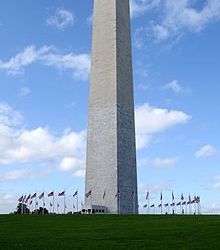
[The Washington Monument, pictured in 2012]
· The Washington Monument is an obelisk within the National Mall in Washington, D.C. It was built in 1848-1854, 1879-1884. The original design was by Robert Mills.
~~·~~·~~·~~

[Clockwise from top right: US Capitol, Washington Monument, White House, Smithsonian Institution Building, Lincoln Memorial & Washington National Cathedral]
· Washington, D.C. is the capital of the United States. It is located on the Potomac River bordering Maryland and Virginia.
~~·~~·~~·~~
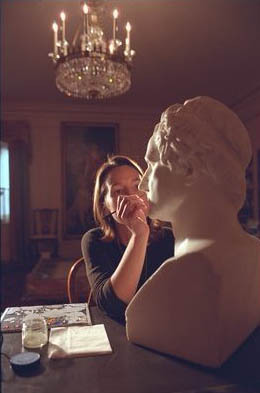
[ Copy (c.1815) by Massimiliano Ravenna after Bust of George Washington (1795) by Giuseppe Ceracchi. Located at the White House.]
~~·~~·~~·~~
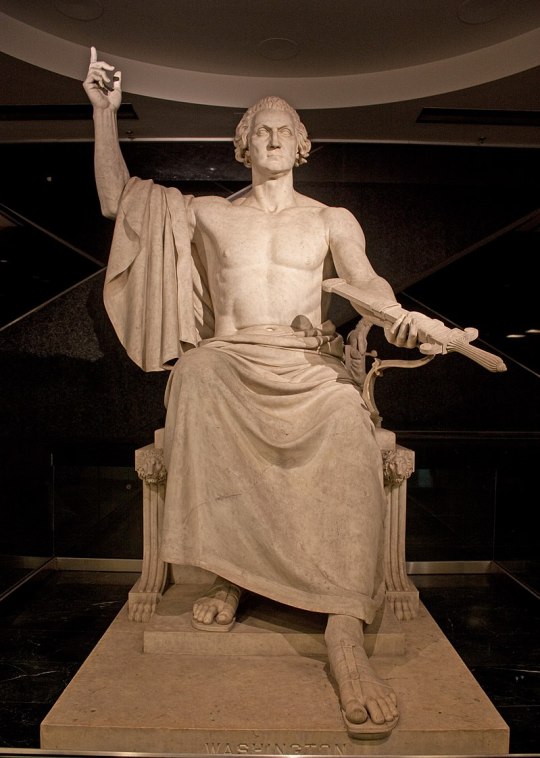
[Enthroned Washington (1840) by Horatio Greenough, for the United States Capitol. Now located at the National Museum of American History]
~~·~~·~~·~~
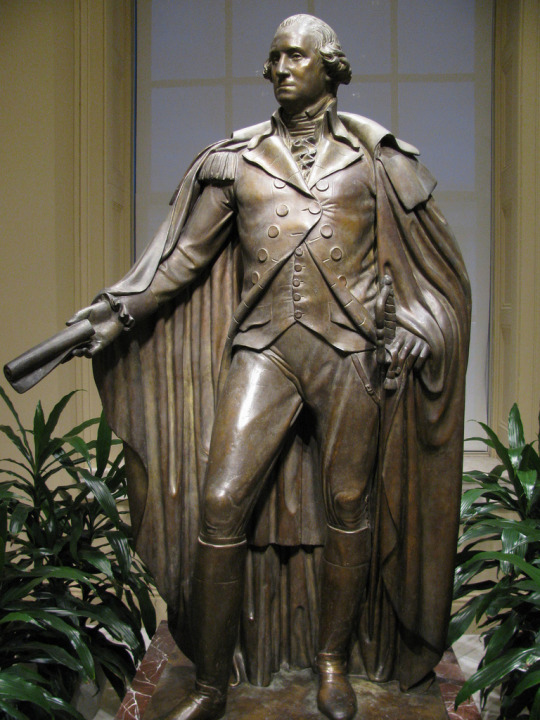
[Washington Resigning His Commission (ca. 1841) by Ferdinand Pettrich. Located at the Smithsonian American Art Museum]
0 notes
Text
“Thanks to you, I think we’re going to run a nice long time.”
youtube
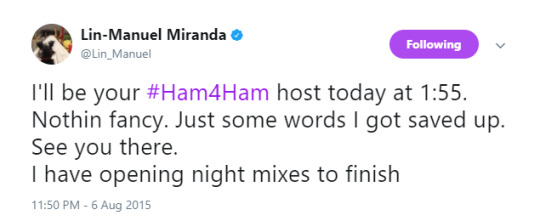
In the early 1850s, few pedestrians strolling past the house on H Street in Washington, near the White House, realized that the ancient widow seated by the window, knitting and arranging flowers, was the last surviving link to the glory days of the early republic. Fifty years earlier, on a rocky, secluded ledge overlooking the Hudson River in Weehawken, New Jersey, Aaron Burr, the vice president of the United States, had fired a mortal shot at her husband, Alexander Hamilton, in a misbegotten effort to remove the man Burr regarded as the main impediment to the advancement of his career. Hamilton was then forty-nine years old. Was it a benign or a cruel destiny that had compelled the widow to outlive her husband by half a century, struggling to raise seven children and surviving almost until the eve of the Civil War?
[choking up]
Elizabeth Schuyler Hamilton—purblind and deaf but gallant to the end—was a stoic woman who never yielded to self-pity. With her gentle manner, Dutch tenacity, and quiet humor, she clung to the deeply rooted religious beliefs that had abetted her reconciliation to the extraordinary misfortunes she had endured. Even in her early nineties, she still dropped to her knees for family prayers. Wrapped in shawls and garbed in the black bombazine dresses that were de rigueur for widows, she wore a starched white ruff and frilly white cap that bespoke a simpler era in American life.
In the front parlor of the house she now shared with her daughter, Eliza Hamilton had crammed the faded memorabilia of her now distant marriage. When visitors called, the tiny, erect, white-haired lady would grab her cane, rise gamely from a black sofa embroidered with a floral pattern of her own design, and escort them to a Gilbert Stuart painting of George Washington. She motioned with pride to a silver wine cooler, tucked discreetly beneath the center table, that had been given to the Hamiltons by Washington himself.
The tour’s highlight stood enshrined in the corner: a marble bust of her dead hero, carved by an Italian sculptor, Giuseppe Ceracchi, during Hamilton’s heyday as the first treasury secretary. Portrayed in the classical style of a noble Roman senator, a toga draped across one shoulder, Hamilton exuded a brisk energy and a massive intelligence in his wide brow, his face illumined by the half smile that often played about his features. This was how Eliza wished to recall him: ardent, hopeful, and eternally young. “That bust I can never forget,” one young visitor remembered, “for the old lady always paused before it in her tour of the rooms and, leaning on her cane, gazed and gazed, as if she could never be satisfied.” [pauses for laughter]
For the select few, Eliza unearthed documents written by Hamilton that qualified as her sacred scripture: an early hymn he had composed or a letter he had drafted during his impoverished boyhood on St. Croix. She frequently grew melancholy and longed for a reunion with “her Hamilton,” as she invariably referred to him. [choking up] “One night, I remember, she seemed sad and absent-minded and could not go to the parlor where there were visitors, but sat near the fire and played backgammon for a while,” said one caller. “When the game was done, she leaned back in her chair a long time with closed eyes, as if lost to all around her. There was a long silence, broken by the murmured words, [choking up] ‘I am so tired. It is so long. I want to see Hamilton.’”
I hope you all get to see Hamilton.
292 notes
·
View notes